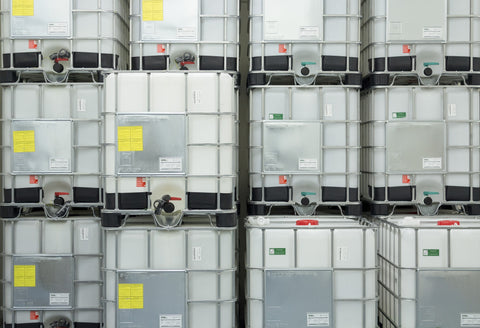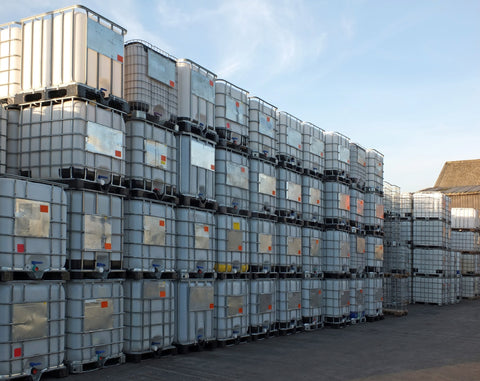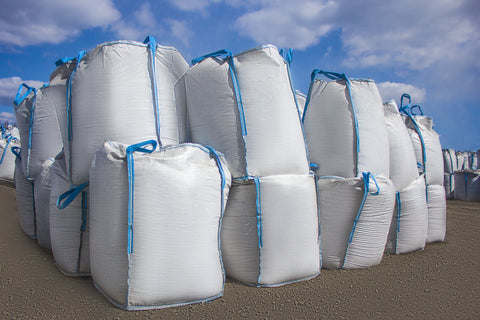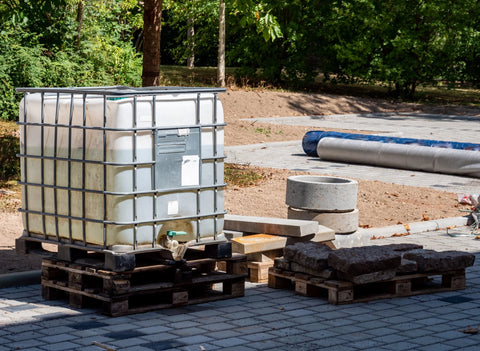Navigating the World of Chemical Safety: An Insight into IBC Totes
Chemical safety is paramount in industrial environments, where the proper handling and storage of chemicals can mean the difference between smooth operations and disastrous accidents. This article delves into the world of Intermediate Bulk Containers (IBCs), specifically focusing on IBC chemical totes, a common and versatile solution for storing and transporting chemicals in large quantities. We'll explore the best practices for storing and handling these containers, ensuring that both the chemicals and the people handling them remain safe. We will cover chemical heating for IBC tanks and how different industrial production industries may rely on chemical heating practices.
Applications of IBC Totes in Industrial Settings
Intermediate Bulk Containers (IBCs) are integral to a myriad of industries that require the safe and efficient handling of bulk materials. Their versatility and robust design make them suitable for a wide range of applications:
-
Chemical Industry: IBC totes are extensively used in the chemical industry for storing and transporting various chemicals, including acids, alkalis, and solvents. Given the potentially hazardous nature of these materials, the durability and secure design of IBC totes make them a preferred choice for ensuring safe handling.
-
Pharmaceuticals: In the pharmaceutical industry, the purity and quality of raw materials are paramount. IBC totes, particularly those made of high-grade stainless steel, are used to store and transport pharmaceutical ingredients, ensuring that they remain uncontaminated and safe for use in drug manufacturing.
-
Food and Beverage Industry: The food and beverage sector relies on IBC totes for storing and transporting various food-grade liquids and ingredients, including oils, syrups, and flavorings. The use of food-grade materials in these totes ensures compliance with health and safety standards and maintains the quality of the products.
-
Agriculture: Caged IBC totes are used in agriculture for the storage and transport of fertilizers, pesticides, and other agrochemicals. Their robust construction is ideal for handling these substances, which often require careful management due to their hazardous nature.
-
Paints and Dyes Industry: This industry utilizes IBC totes for handling bulk quantities of paints, dyes, and related chemicals. The containers' resistance to various chemicals and their ease of transport makes them a practical choice for these applications.
-
Cosmetics and Personal Care: IBC totes are also employed in the production of cosmetics and personal care items. They provide an effective solution for storing and mixing large batches of products like creams, lotions, and shampoos, ensuring consistency and quality control.
-
Construction and Building Materials: In construction, IBC totes are used for transporting and storing various building materials, including adhesives, sealants, and other construction chemicals. Their ability to withstand rough handling and harsh conditions on construction sites makes them invaluable in this sector.
-
Oil and Gas Industry: For the oil and gas sector, IBC totes are crucial for the transport and storage of lubricants, drilling fluids, and other petrochemical products. The high capacity and durability of these totes are essential for the demanding conditions of this industry. The oil and gas industry requires strict standards to be met as these totes may contain combustible materials or are, at the very least, surrounded by them.
-
Waste Management and Environmental Services: IBC totes are also utilized in waste management for the collection and transport of non-hazardous and hazardous waste liquids. They play a key role in ensuring that these materials (e.g. caustic soda) are handled in an environmentally responsible manner. Dangerous goods such as these require durable plastic or metal IBCs that can withstand low and high temperatures in order to keep hazardous materials contained.
In all these industries, the choice of the right type of intermediate bulk containers – whether it's a caged tote for extra protection, a stainless steel tote for chemical compatibility, or a plastic tote for cost-effectiveness – is crucial. This ensures not only the safety and efficiency of material handling but also compliance with industry-specific regulations and standards.

Key Safety Practices for Storing and Handling Chemical IBCs
Proper Storage of IBC Containers
Storing chemicals in IBC containers requires careful consideration of the nature of the materials and the containers' design. For instance, stainless steel IBCs are often preferred for flammable liquids due to their resistance to heat and corrosion. It's crucial to store IBCs in an environment where the temperature is controlled to prevent any risk of fire or degradation of the chemical.
Handling Chemicals Safely in IBCs
Safe handling of IBCs involves understanding the potential hazards and employing best practices like using proper equipment for lifting and moving the containers. This minimizes the risk of accidents and ensures the safety of the handlers. Training in handling dangerous goods and following established work practices are critical components of chemical safety.
Chemical Heating in IBCs: Ensuring Safe and Efficient Temperature Control
Importance of Maintaining Desired Temperature
In numerous industrial processes, the efficacy and safety of chemicals hinge critically on their temperature. Certain chemicals require specific temperature ranges to remain stable, effective, or to react properly. For instance, in the pharmaceutical industry, the precise temperature control of ingredients is vital to ensure the effectiveness and safety of medications. Similarly, in the food industry, maintaining the correct temperature is essential for preserving the quality and safety of products.
Temperature control is also a safety concern. Some chemicals become hazardous if they are either too cold or too hot. For instance, certain chemicals might emit toxic fumes or become more reactive when heated beyond a specific point. On the other hand, some materials may thicken or solidify at lower temperatures, potentially causing handling issues or damaging the IBC.
Heating Chemicals in IBCs: Methods and Best Practices
The heating of chemicals in IBCs is a task that demands precision and the right equipment. Uneven heating can lead to hotspots, which might degrade the quality of the chemical or even pose a safety risk in the form of combustion or chemical reactions.

-
Heating Jackets: These are one of the most common methods for heating chemicals in IBCs. Heating jackets wrap around the IBC and use either electric or thermal fluid to provide gentle, uniform heat. They are especially useful for maintaining a consistent temperature or slowly bringing a chemical up to the desired temperature.
-
Immersion Heaters: These heaters are inserted directly into the chemical. They are highly efficient for heating liquids but must be selected carefully based on the chemical's properties to avoid material incompatibility or contamination.
-
Base Heaters: Base heaters are placed underneath the IBC tote and are effective for heating up the contents from the bottom. This method is often used in conjunction with other heating methods to ensure even heat distribution.
-
Insulated Covers: While not heating devices per se, insulated covers are important for temperature maintenance, especially in cold environments. They work by retaining the heat within the IBC, ensuring that the temperature of the contents remains stable.
When selecting a heating method, several factors must be considered:
-
Chemical Compatibility: The material of the heater must be compatible with the chemical to avoid reactions or contamination.
-
Temperature Range and Control: The heater must be able to achieve and maintain the desired temperature range. Digital controls can provide precision and prevent overheating.
-
Safety Features: Features like automatic shut-off, temperature alarms, and explosion-proof specifications are crucial, especially when dealing with flammable or hazardous chemicals.
Compliance with Regulations and Best Practices
Adhering to Federal Regulations and Standards
When it comes to chemical storage and heating, adherence to federal regulations is non-negotiable. These regulations ensure that the storage and handling of chemicals meet safety standards, reducing the risk of accidents.
Engineering Controls and Work Practices for Safety
Implementing engineering controls like proper ventilation and spill containment systems can significantly reduce risks associated with chemical IBCs. Regular maintenance and inspections are also part of best practices, ensuring the containers and heating systems are in top condition.
The Risks and Mitigation Strategies
Identifying Potential Hazards with Chemical IBCs
Understanding the risks associated with chemical storage and heating is the first step in mitigation. This includes recognizing the nature of the chemicals, their interaction with different materials, and the potential for hazardous reactions under certain conditions.
Using top-quality materials to store these chemicals, like intermediate bulk containers that are rated to hold hazardous materials, will ensure that you can use accessories such as heating units to control the temperature of the liquids without risk.
Strategies for Minimizing Risks
To minimize risks, it's essential to have emergency response plans in place and to train personnel in risk identification and response. Regular risk assessments and audits can help identify and address potential hazards before they become issues.
Chemical IBC FAQs
What is IBC chemical?
An IBC chemical refers to any chemical substance that is stored or transported in an Intermediate Bulk Container (IBC). These containers are used for the efficient handling, storage, and transportation of various chemicals, ranging from hazardous materials to common industrial chemicals.
What does IBC stand for in hazmat?
In the context of hazardous materials (hazmat), IBC stands for Intermediate Bulk Container. In hazmat usage, IBCs are critical for safely transporting and storing hazardous substances, including flammable, corrosive, or toxic materials, in compliance with safety regulations.
What chemicals should not be heated?
Certain chemicals should not be heated due to the risk of decomposition, explosion, or the release of toxic fumes. Examples include peroxides (which can decompose violently), nitro compounds, and certain organic materials like cellulose nitrate. Always consult material safety data sheets (MSDS) for specific guidance on whether a chemical can be safely heated.
What do we use to heat chemicals?
Chemicals are typically heated using specialized equipment that provides controlled and uniform heat. This includes heating mantles, hot plates, heating baths (such as water or oil baths), and immersion heaters. The choice of equipment depends on the chemical's properties, required temperature range, and safety considerations.
Cultivating a Culture of Safety: The Final Word on Chemical Tote Management
The safe storage and handling of industrial chemical containers are critical in maintaining a safe work environment. By understanding the types of intermediate bulk containers available, adhering to best practices in storage and handling, and ensuring compliance with regulations, industries can significantly mitigate the risks associated with chemical totes. Regular training, maintenance, and a thorough understanding of the chemicals being handled are key to ensuring a safe and efficient operation.
Remember, safety in chemical handling is not just about following guidelines; it's about creating a culture of safety and responsibility. Each step, from selecting the right IBC tote to properly heating chemicals, plays a crucial role in maintaining a safe industrial environment.








